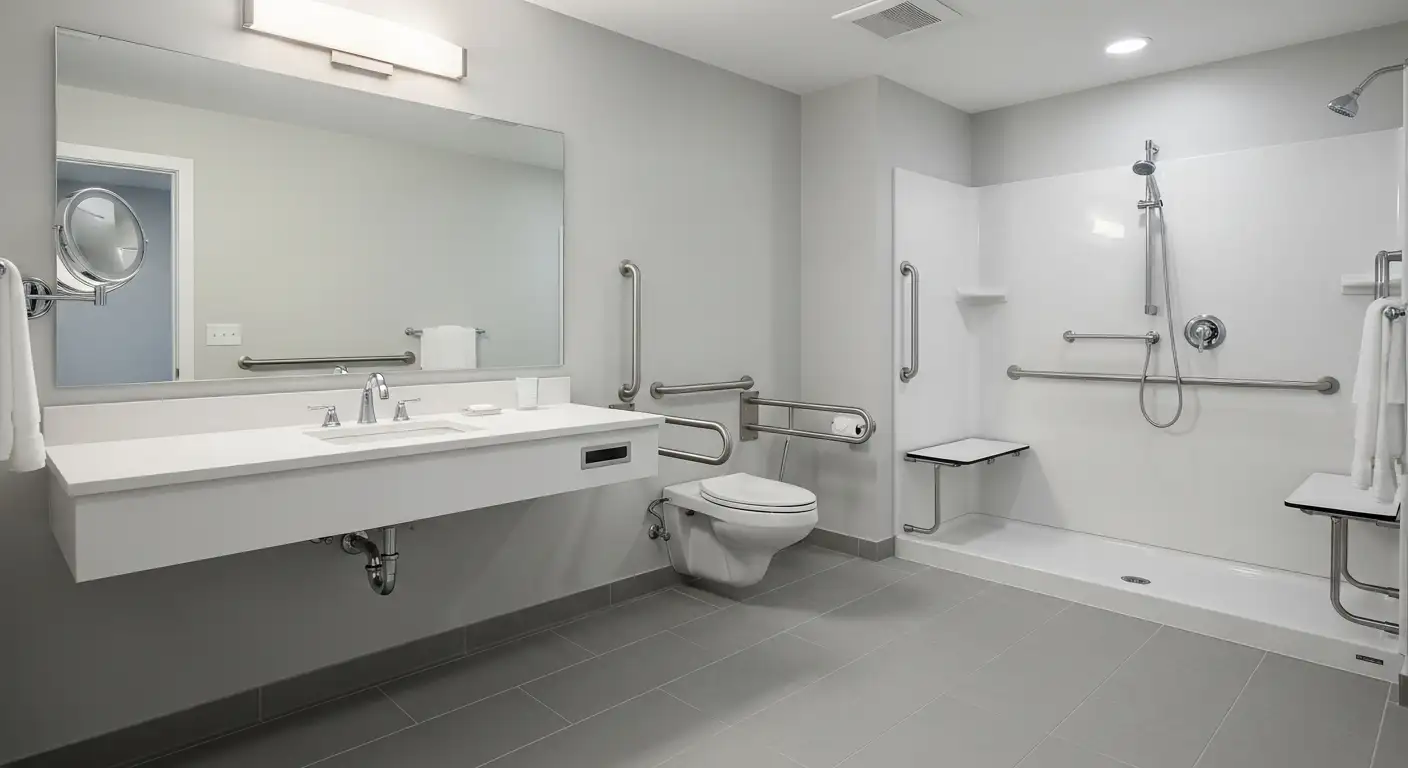Calming Strategies For Kids With Autism
Supporting Calmness in Children with Autism: Comprehensive Strategies and Environments
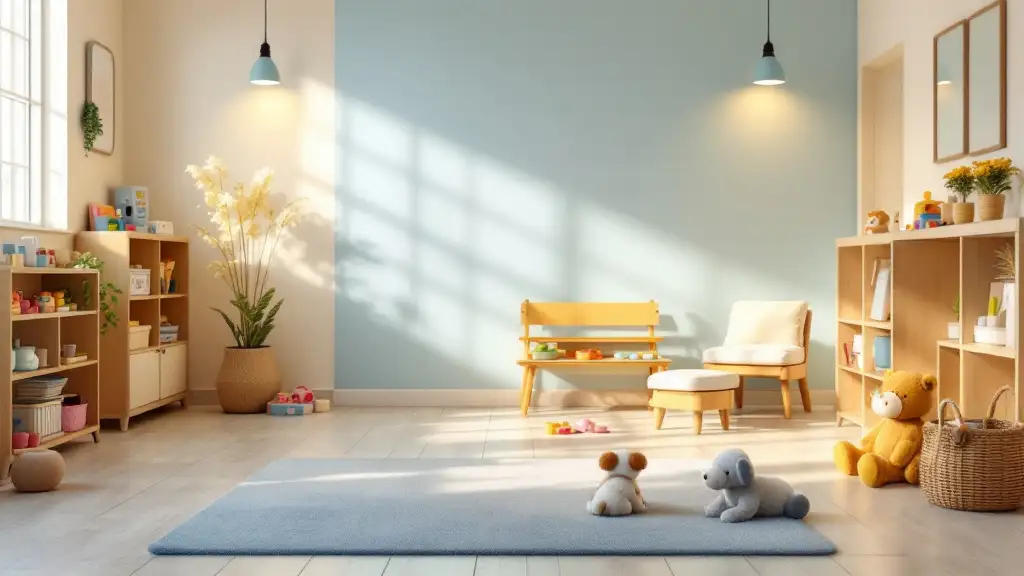
Understanding and Implementing Calming Techniques for Children with Autism
Children with autism often experience sensory overload, which can lead to emotional distress and meltdowns. Recognizing the signs and understanding triggers are crucial steps in providing effective support. This article explores various calming strategies, sensory activities, and environmental modifications to help children with autism manage their emotions and sensory sensitivities more effectively. By adopting a holistic approach that combines sensory regulation, structured routines, and supportive environments, caregivers, educators, and families can foster a sense of safety and calmness for children on the spectrum.
Recognizing Signs of Sensory Overload and Common Triggers
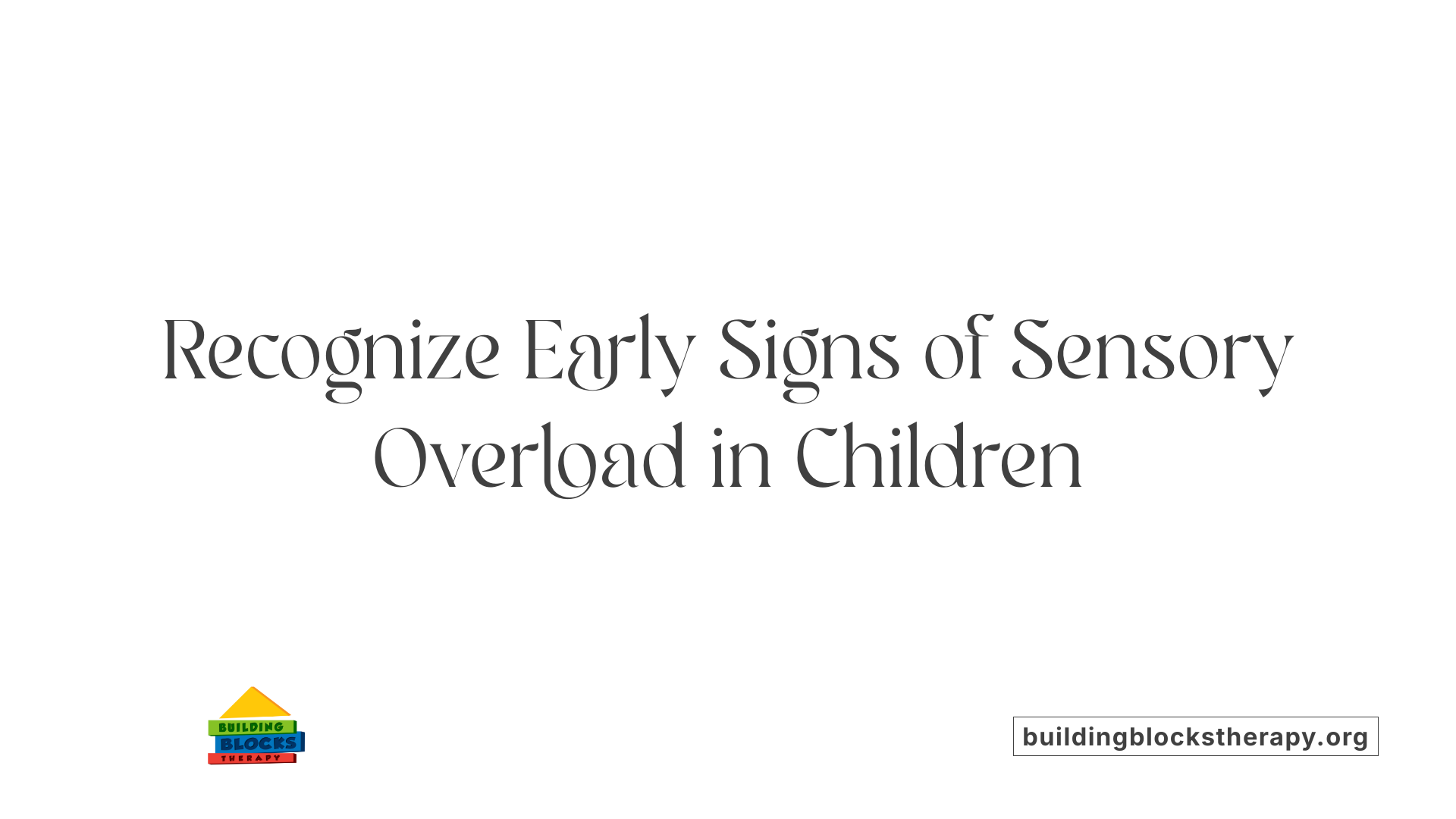
How can signs of sensory overload be recognized in children with autism, and what are common triggers?
Children with autism often show specific behavioral and physical cues when experiencing sensory overload. Signs include covering their ears to block out noise, shielding or avoiding their eyes if bright lights or flashing images are overwhelming, and becoming overly fidgety or agitated. During these moments, they might have meltdowns or emotional outbursts, which are involuntary responses to their nervous system being overwhelmed.
Other typical behaviors include increased stimming, such as rocking, hand-flapping, or spinning, which helps them self-soothe. They may retreat or withdraw from social interactions and have difficulty communicating their discomfort. Physical signs like clenched fists, grimacing, or rapid breathing may also be observed.
Understanding what triggers these responses is crucial. Common triggers include loud noises, bright or flickering lights, strong or unpleasant smells, and certain textures that cause discomfort. Chaotic environments with a lot of movement or busy visuals can also push a child into overload. Some children may seek additional sensory input, like intense movement, indicating hyposensitivity, while others become overwhelmed by too much stimuli.
Recognizing these signs early allows caregivers, educators, and therapists to implement calming strategies proactively. Creating a calm, predictable environment and providing sensory tools like noise-canceling headphones, sensory bottles, or quiet spaces can help prevent escalation and support the child's ability to manage sensory overload.
Key Calming Strategies and Techniques During Emotional Overload
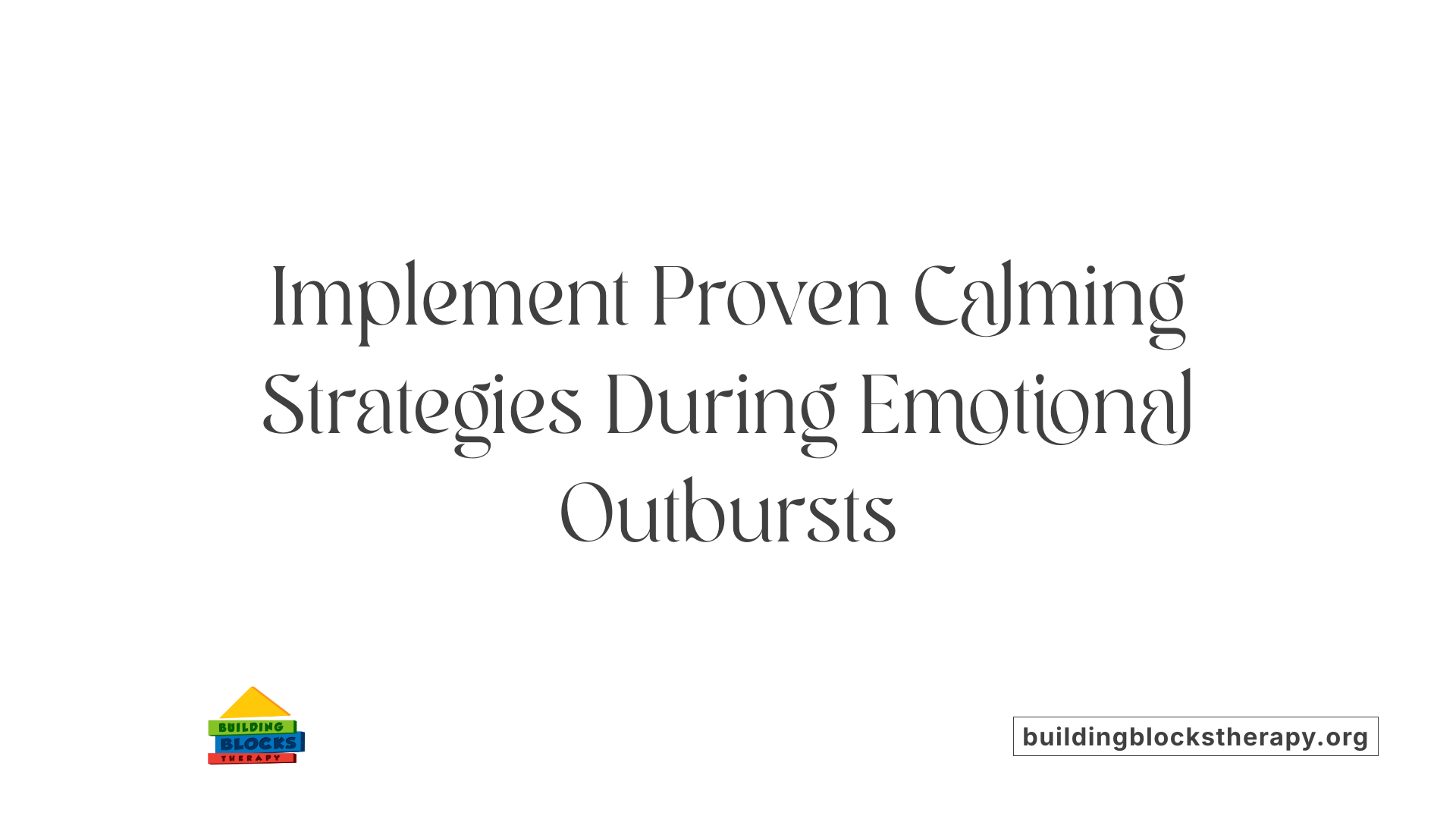
What are effective calming strategies and techniques for children with autism to manage meltdowns and emotional overload?
Managing meltdowns and emotional overload requires a combination of sensory regulation, emotional support, and environmental adjustments. Recognizing early signs, such as stimming or covering ears, allows caregivers and educators to intervene before a meltdown escalates.
One of the most effective methods is deep pressure therapy. Applying gentle, firm pressure through tools like weighted blankets, vests, or compression clothing can promote relaxation and help the nervous system settle. These tools mimic the calming sensation of a firm hug, which many children find soothing.
Sensory tools and objects are also invaluable. Items such as fidget toys, sensory bottles filled with glitter or beads, or soft materials like play dough provide tactile stimulation that can help channel restless energy. Noise-canceling headphones are useful for reducing auditory overstimulation, especially in noisy environments.
Creating a calm environment involves visual supports and routines. Visual schedules and social stories explain daily activities and coping strategies, reducing anxiety and preventing stress triggers. A designated safe space or quiet zone equipped with sensory tools offers children a retreat when feeling overwhelmed, enabling them to regain control.
Breathing and relaxation exercises are simple yet powerful techniques. Practices like balloon breathing or grounding exercises such as the '54321' method can be taught during calm moments to help children self-regulate during stressful events.
In addition, physical movement activities like jumping on a trampoline, swinging, or crawling through tunnels help burn off excess energy and promote calmness. Establishing consistent routines and using visual cues make transitions smoother and minimize surprises that can trigger overload.
Teaching these calming strategies when children are calm and in a non-stressful state enhances their effectiveness during moments of distress. Reinforcing these techniques through role-playing and visual aids builds confidence and equips children with tools to manage their emotions.
Essentially, an empathetic approach that respects the child's emotional state, combined with practical tools such as sensory objects, visual supports, and safe spaces, creates a supportive environment. This helps children with autism navigate overwhelming moments more comfortably, leading to better emotional regulation over time.
| Technique | Description | Additional Tools/Examples |
|---|---|---|
| Deep pressure therapy | Using firm, gentle pressure to promote relaxation | Weighted blankets, vests, squeeze toys |
| Sensory objects | Tactile or visual stimulation to soothe or focus | Fidget toys, sensory bottles, soft fabrics |
| Visual supports | Visual cues and routines to reduce anxiety | Visual schedules, social stories |
| Breathing exercises | Techniques to calm nerves and promote mindfulness | Balloon breathing, grounding exercises |
| Safe/quiet spaces | Areas designated for retreat and regulation | Sensory tents or calm-down corners |
Implementing these strategies with patience and consistency helps children develop self-calming skills, leading to better management of meltdowns and emotional stress.
Practical Sensory Activities and Therapies to Promote Regulation
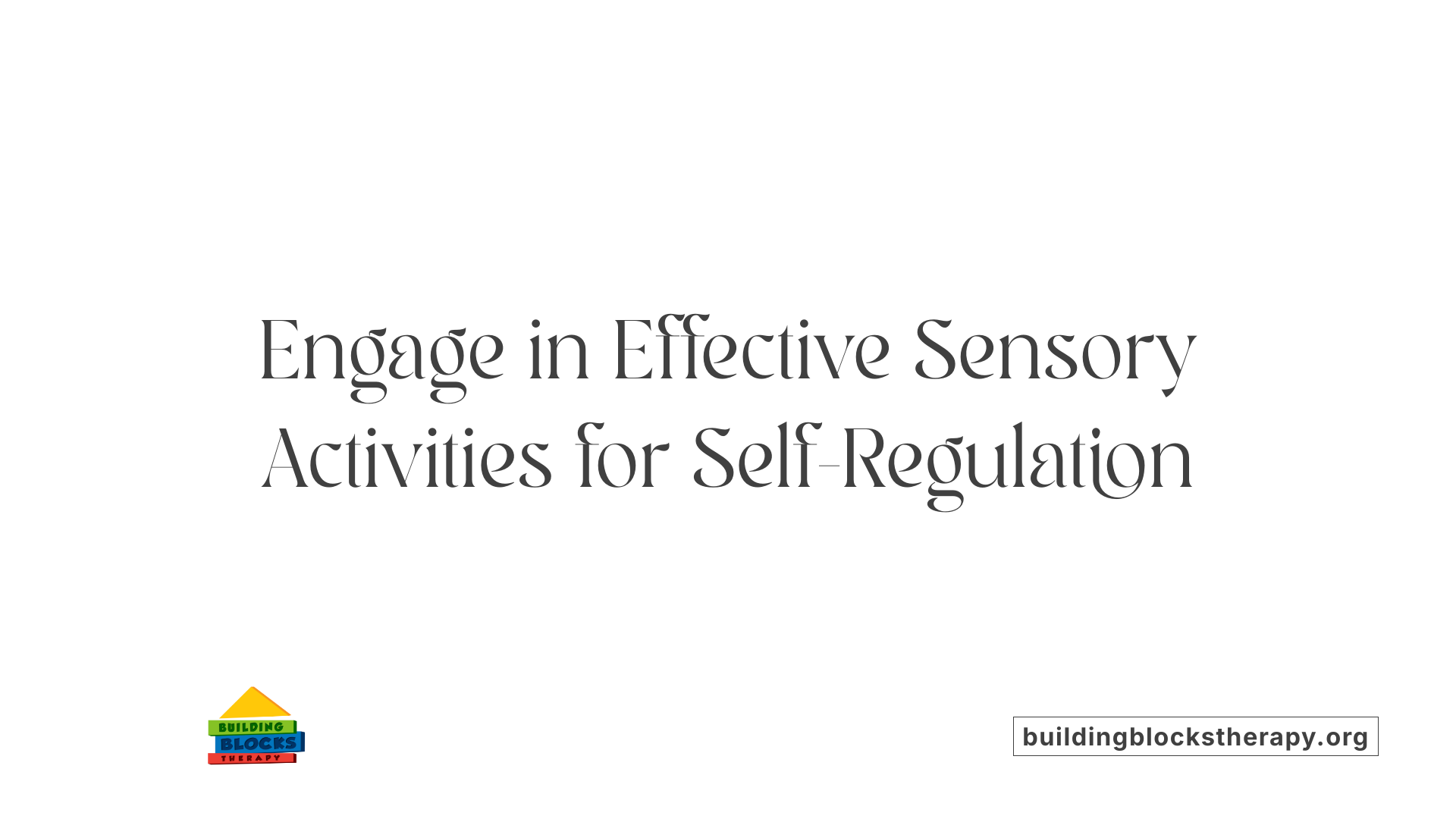 What practical sensory activities and therapies can help children with autism regulate their senses?
What practical sensory activities and therapies can help children with autism regulate their senses?
Engaging in sensory activities is an effective way to assist children with autism in managing their sensory needs and promoting calmness. These activities address different senses—touch, sound, sight, balance, and body awareness—and are designed to be safe, enjoyable, and developmental.
Tactile activities, like playing with textured materials such as slime, water beads, or shaving cream, allow children to explore textures in a controlled way. These experiences can help desensitize sensitivities and improve fine motor skills.
Auditory and visual therapies involve the use of calming sounds and visuals. Listening to soft, rhythmic music or using visual aids like calming light projectors can create a peaceful environment. Sensory bottles filled with glitter or beads are also helpful for visual calming, providing gentle visual stimulation that aids relaxation.
Vestibular activities, which involve movement, are particularly effective for self-regulation. Swinging, spinning on a merry-go-round, or walking along a web-like structure known as a spider web walk help with balance and body-awareness. Jumping on trampolines or climbing activities serve as both movement outlets and calming strategies.
Proprioceptive activities, also called heavy work, involve pushing, pulling, or lifting. These activities help children feel more grounded and in control of their bodies. Examples include wall pushes, carrying weighted objects, crawling through tunnels, or using resistance bands.
Using sensory tools enhances these activities further. Fidget toys like stress balls, Tangle toys, and textured items provide tactile input, while noise-canceling headphones and visual schedules help reduce over-stimulation and clarify routines.
Implementing movement-based therapies not only helps burn excess energy but also stabilizes emotions. Combining sensory play with predictable routines and safe environments ensures that children can explore comfortably and develop self-regulation skills.
| Sensory Activity | Description | Additional Benefits |
|---|---|---|
| Water Play | Playing with water, bubbles, or water beads | Stimulates tactile and visual senses; promotes calming |
| Swinging | Using playground or therapy swings | Enhances vestibular sense and balance |
| Jumping | Trampolines or jumping on mats | Supports proprioception and energetic regulation |
| Crawling | Through tunnels or obstacle courses | Develops body awareness and motor skills |
| Heavy Work | Pushing, pulling, lifting activities | Provides proprioceptive feedback and calming |
| Fidget Toys | Stress balls, textured discs | Improves tactile focus and reduces anxiety |
Incorporating a variety of these sensory activities tailored to each child's preferences and sensitivities can significantly enhance self-regulation and overall well-being. These therapies are most effective when integrated into daily routines, creating a structured yet flexible environment conducive to sensory exploration.
Supporting Classroom and Social Skill Development
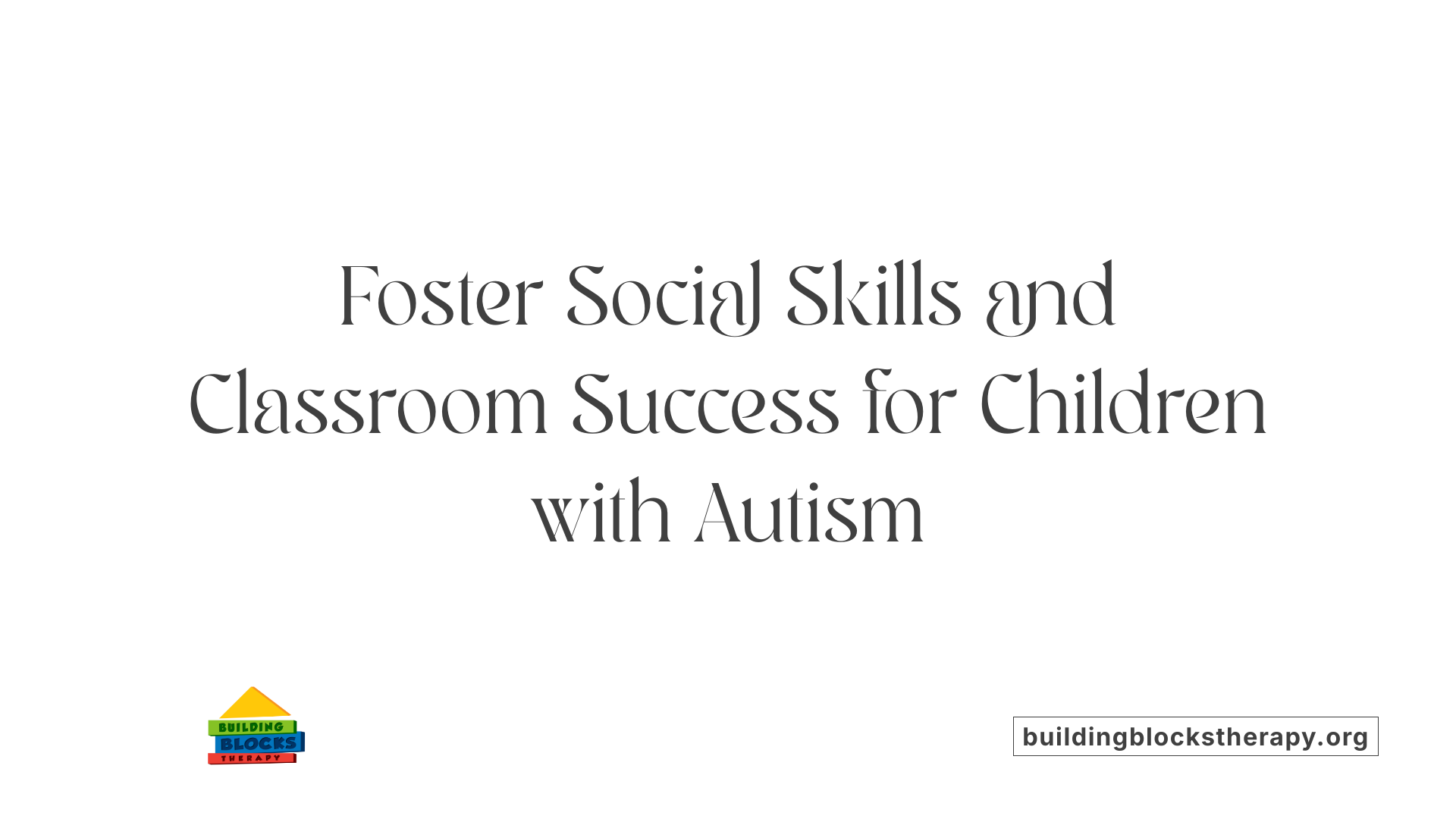
What strategies can educators and caregivers use to support children with autism in the classroom, including social skills development?
Supporting children with autism in educational settings involves a combination of structured routines, sensory management techniques, and social skill-building activities.
Implementing predictable daily routines with visual supports helps children understand what to expect, reducing anxiety and preventing sensory overload. Visual schedules, picture cues, and clear expectations create a sense of security and facilitate smoother transitions throughout the day.
Using social narratives and peer interactions can significantly enhance communication skills and social understanding. Short stories or role-playing scenarios explain social situations and appropriate responses, making social rules clearer and less intimidating.
Creating a sensory-friendly environment is essential. This includes designated quiet areas, sensory breaks with tools like fidget toys or calming visuals, and options such as noise-canceling headphones to help children self-regulate during overwhelming moments.
Fostering social skills also involves structured group activities that promote cooperation and sharing. Pairing children with positive role models encourages social exchanges and can help reduce feelings of isolation. Teachers can model appropriate behaviors and provide reinforcement through descriptive praise.
Every child's unique needs call for individualized supports. This may include specific accommodations like adapted curricula, behavioral plans, or therapy services. Regular collaboration with families, occupational therapists, speech therapists, and other specialists ensures a comprehensive approach to each child's development.
An inclusive, accepting classroom climate encourages all children to participate and feel valued. Celebrating diversity, promoting kindness, and emphasizing each child's strengths foster a positive environment for social growth.
| Strategy | Description | How It Helps |
|---|---|---|
| Visual routines | Clear visual schedules and cues | Reduce anxiety, improve understanding |
| Social stories | Narratives about social situations | Clarify expectations, reduce fears |
| Sensory tools | Fidget toys, calming visuals, headphones | Manage sensory overload |
| Peer supports | Pairing with positive role models | Promote engagement and social skills |
| Individualized plans | Specific supports tailored to the child | Address unique needs and goals |
| Inclusive environment | Celebrating diversity and encouraging participation | Build confidence and social connections |
By combining these strategies, educators can create a supportive classroom environment that nurtures social skills development and helps children with autism thrive academically and socially.
Creating Sensory-Friendly Environments to Reduce Stress
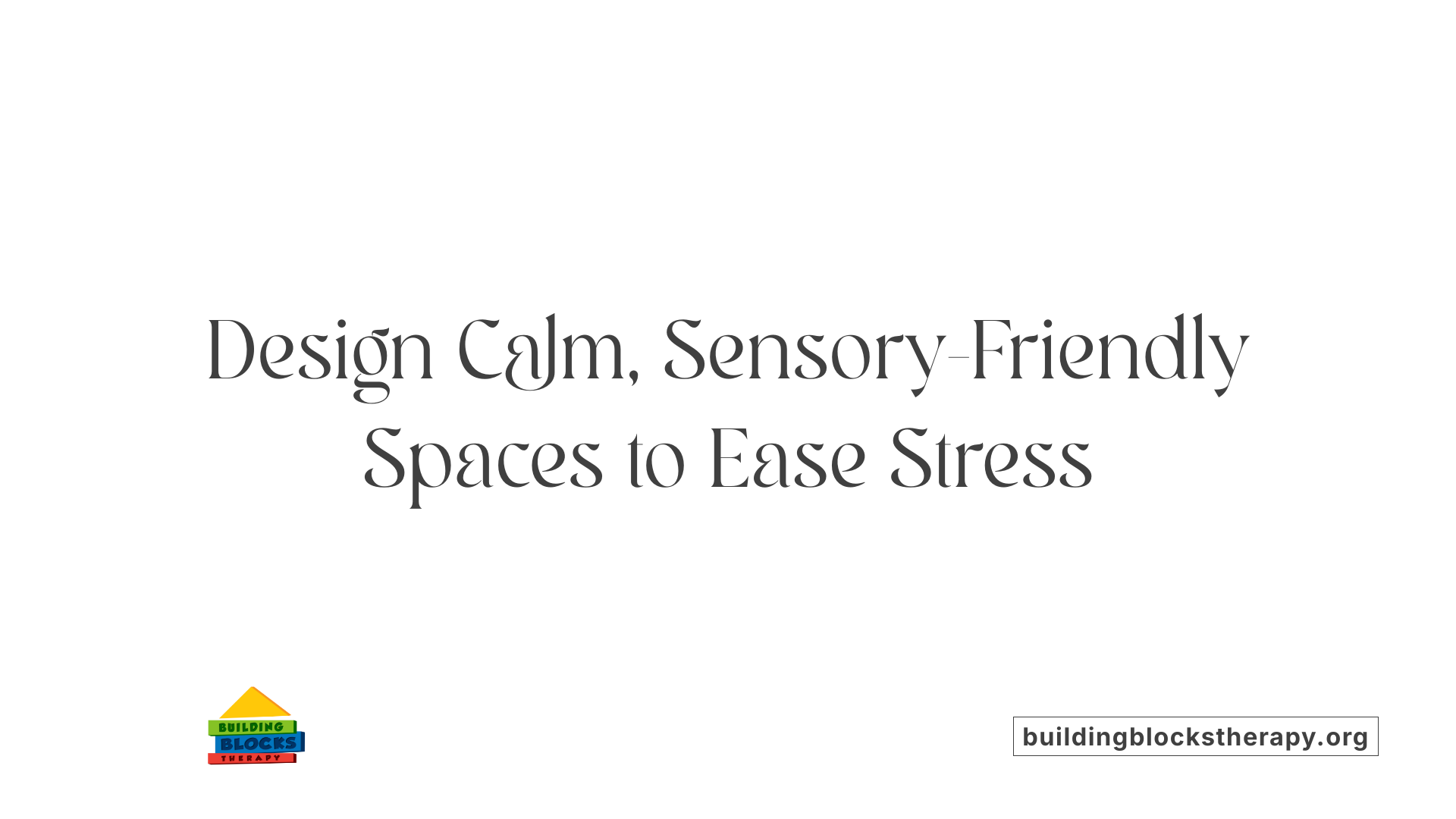
How can sensory-friendly environments be created to promote relaxation and reduce stress for children with autism?
Designing spaces that are calming and welcoming for children with autism requires careful planning to reduce sensory overload. This can be achieved by making adjustments to lighting, sound, and scents, along with incorporating specific sensory tools and designated zones.
One effective approach is to control lighting within the environment. Using soft, warm lights instead of harsh or flickering lights helps create a soothing atmosphere. Dimmer switches, blackout curtains, or soft LED lights can be used to adjust lighting according to the child's comfort level.
Controlling olfactory stimuli is also important. Limiting strong scents and using natural, subtle fragrances can prevent undue olfactory stimulation. Air purifiers and scent-free cleaning products contribute to maintaining a neutral olfactory environment.
Noise reduction also plays a crucial role. Soundproofing walls, adding soft materials like carpets or curtains, and creating quiet zones or sensory rooms can help manage auditory stimuli. Noise-canceling headphones are valuable tools for children who are sensitive to loud or sudden sounds.
Designing spaces with sensory tools and calming elements enhances relaxation. Items such as weighted blankets, textured fabrics, calming music or nature sounds, and visual supports like calming lighting or visual schedules can help children feel secure. Organizing sensory toys neatly and providing access to tactile objects like play dough or fidget toys can help children self-regulate.
Creating environments that engage all eight senses—sight, hearing, smell, taste, touch, vestibular, proprioception, and interoception—is vital. Features like swings, textured walls, aromatherapy, or even gentle movements through rocking chairs support sensory integration.
Involving children and their families during the design process promotes inclusivity. Understanding individual sensory preferences ensures the space meets diverse needs. Moreover, establishing dedicated sensory zones within schools or homes offers children a safe place to retreat when overwhelmed.
Features of a sensory-friendly space include:
| Element | Purpose | Additional Details |
|---|---|---|
| Adjustable lighting | Reduce visual overstimulation | Use of soft, non-flickering lights |
| Soundproofing | Minimize auditory input | Sound-absorbing materials and quiet zones |
| Sensory tools | Promote self-regulation | Weighted blankets, fidget toys, calming bottles |
| Texture zones | Support tactile needs | Soft fabrics, textured mats |
| Calming visuals | Enhance relaxation | Nature scenes, calming colors |
| Movement options | Support vestibular/proprioceptive input | Swings, textured balance beams |
| Multi-sensory engagement | Support balance across senses | Aromatherapy, taste-safe scent diffusers |
Creating a welcoming sensory environment is a collaborative effort involving design, awareness, and ongoing adjustment. By focusing on reducing overwhelming stimuli and incorporating calming elements, such spaces provide children with autism a safer, more comfortable environment for relaxation and sensory regulation.
Teaching Self-Calming Techniques Through Visual Aids and Activities
How can children with autism be taught self-calming techniques through visual aids and structured activities?
Teaching children with autism effective self-calming strategies involves a combination of visual supports and structured routines that create a predictable environment. Visual aids, such as social stories and visual schedules, serve as powerful tools to help children recognize when they are overwhelmed and guide them toward calming techniques.
Social stories are short, illustrated narratives that explain social situations and appropriate responses, including calming steps. Visual schedules outline daily routines, reducing uncertainty and anxiety, particularly during transitions or stressful moments.
Structured activities, like deep pressure input using weighted blankets or toys, and breathing exercises demonstrated through visual prompts, provide tangible ways for children to self-regulate. Incorporating sensory tools such as fidget toys, calming lights, or sensory bottles offers additional sensory input that can soothe an overstimulated mind.
Role playing and modeling are essential components. Caregivers and educators can demonstrate calming strategies, such as deep breathing or gentle presses, and then guide children through practicing these techniques in safe environments. Repetition and positive reinforcement help children internalize these methods.
Creating routines that are consistent and predictable encourages children to anticipate calming activities, making self-regulation part of their daily habit. Visual cues like pictures or color-coded signals can signify when to use certain calming strategies.
Overall, teaching self-calming techniques proactively and consistently, with patience and flexibility, helps children develop essential coping skills. A calm, sensory-friendly environment equipped with appropriate tools enhances their ability to manage stress and build emotional resilience, leading to more positive interactions and smoother transitions in various settings.
Empowering Children with Autism Through Comfort and Preparation
Supporting children with autism in managing their emotions involves a comprehensive approach that includes recognizing early signs of overload, implementing effective calming techniques, and creating supportive environments. Sensory activities and therapies play a vital role in helping children regulate their senses, while structured routines and visual supports foster predictability and independence. By designing sensory-friendly spaces and teaching self-calming skills through visual aids and structured activities, caregivers and educators can empower children to navigate overwhelming situations more confidently. Patience, consistency, and understanding are essential in nurturing emotional resilience and promoting well-being. Through these combined efforts, children with autism can experience greater comfort, reduced stress, and improved quality of life.
References
- Meltdowns & Calming Techniques in Autism
- 7 Calming Strategies for Autism Every Parent or Guardian ...
- 25 Organising and Calming Sensory Activities For Children ...
- Autism in the classroom: Strategies for success
- 10 Calming Strategies for Autism: Reduce Anxiety and ...
- How to Help Calm a Child Living with Autism
- Calming Strategies for Children: Techniques to Teach ...
- Autism in the classroom: Strategies for success



